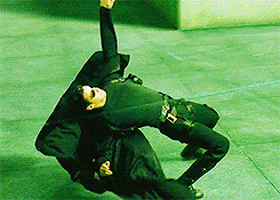This post is going to be pretty short.
I’ve been thinking about why crashing is so commonly taught even to very skilled and in-depth martial artists, why is it a tactic? Sure it’s easy, but there are things that provide a better end result.
So why?
Then I realised it’s a timing thing, why crashing exists in most systems, even ‘soft’ ones.
What is the answer?
The question is, do I have my opponents timing down.
Yes?
Then do any action other than crashing, for any other action is better. You have no need to crash the attack, because you have the timing, you can be neat and clean, efficient. Hell you should be.

No? You don’t have their timing?
Then crashing is appropriate, because that’s literally what crashing is made for. It’s a popular tool because your timing does not need to be perfect to use it, you have a broad range to time a crash despite being dragged into a dirty fight when you do it.
That’s why when doing counter assault training, crashes are taught more than redirects, since most self-defense schools don’t have students who are die hard martial artists, they won’t spend time developing good timing. So a cross makes more sense to teach vs something cleaner and more rewarding. Hell even skilled people will struggle to pick up timing when surprised.

Now I can’t give you an answer what to do as a conditioned response when your surprised, that really depends on your training timeline.
But if you already know your in a bad situation, the decision to do something clean vs do something smashy really comes down to “Can I read this?”
Because either you can control the fight, or you can’t. When you can control it, be a ninja. When you can’t, get dirty.
Of course there are other contexts to flow or crash as well. I had a conversation with my Karate teacher Rick, and he pointed out crashing makes sense if you see someone just about to draw a knife or weapon. In that case you have the timing down, but crashing is appropriate then.
Or a redirect as a conditioned response for a knife attack. Notice most Filipino martial arts very quickly encourage redirection and flow over crashes when getting stabbed? Sure they start out like that so people know where to put the hands, but quickly often constantly try to flow the knife attack rather than jam it. Not saying this is universal to them, just something I noticed they do compared to Krav Maga or typical RBSD stuff.
The reason for this is that against a knife strike or stab, a jam provides energy for them to keep going, and Filipino martial arts guys that do it all the time no doubt notice this. I’ve played with FMA guys who yes jam, but even more than will try to make contact and try to guide the hand rather than jam it, even when the timing is very difficult to read, which is the context crashing was designed for, they will still try to redirect.

They are not doing this because they are mistaken, it’s because against a knife, a crash can lead to a pistoning flurry of stabs.
So of course, even my argument of “Got timing? Be smooth. Don’t got timing? Crash.” has contextual caveats that changes things.